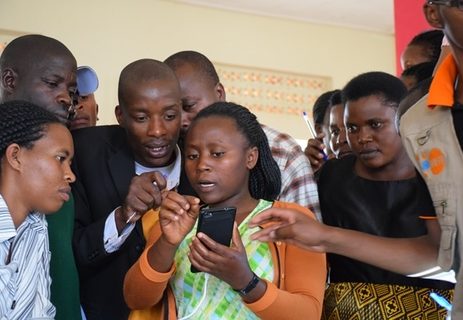
Chair Details
NAME: Sandra Lopessilva
ORGANISATION: World Food Programme
EMAIL: sandra.lopessilva@wfp.org
Co Chair Details
NAME:
ORGANISATION:
EMAIL:
Key DPG messages/Priorities
Social Protection Development Partners Messages on Building Uganda’s Capacity to Respond to Shocks
The importance of coordination
Actors and agencies involved in disaster risk management, social protection, social services such as health, and humanitarian assistance need to come together and coordinate effectively. This includes coordination among different government MDAs and among development partners to develop a coherent policy and approaches.
In advance of shocks, it is critical to invest in preparedness to ensure clarity on procedures, guidelines, decision-making processes, financing mechanisms and response modalities, based on robust evidence from experience in Uganda and abroad. If not addressed in time, those issues can become sources of political tension, uncovering ambiguity over the mandate of an agency or the decision-making power of another. When triggers for anticipation and/or response are confirmed, additional human resources are needed to ensure effective coordination is in place.
When action is triggered in anticipation or response to shocks, coordination needs to focus on operational aspects, to ensure effective and timely interventions that can protect vulnerable people from exacerbating unmet humanitarian needs which could entail falling into poverty, preserve development gains and save money from costly belated responses. Alignment on effective anticipatory action and/or response should primarily consider the possibility to flex existing programmes, with a coherent approach on targeting criteria, transfers and coverage, based on consensus built in advance. Ensuring equitable consideration of refugees and Ugandan nationals applying a common vulnerability criteria is essential at all stages. An evidence-based menu of response options should be developed in advance, learning from Ugandan, regional and global experiences on the most cost-effective response modalities. This includes investing in comparing different response modalities in advance of time, to identify those that can maximize coverage and swiftly reach beneficiaries. Similarly, consensus should be built on the transition off the emergency phase, based on common phased-out criteria from crisis.
- A shock-responsive system-building agenda
Interventions to strengthen and coordinate Uganda’s capacity to anticipate, mitigate and respond to shocks should be systemic and based on a whole of government approach, avoiding a programme-specific, siloed approach.
Several system building blocks are already present, but often belong to separate sectors or programmes. They are not necessarily designed with inter-operability in mind, and are thus open to fragmentation. To develop shock-responsive systems, functions like information management systems, registration and enrolment, payment/delivery infrastructure, and monitoring and evaluation should be able to operate across programmes. Rather than designing new shock-responsive programmes, we should collectively invest on the interoperability of the systems and their core functions. This disconnect is particularly visible in the lack of underpinning financing mechanisms to allow programmes to expand and flex in times of crisis, however adequate financial instruments could be designed on the basis of a robust shock-responsive system. The switch from a sector-based to a program-based approach under NDP III will offer a more adequate framework for improvement and alignment between all stakeholders.
- National and local capacity
Efforts to transfer, build or strengthen capacity from international to domestic actors should ensure that capacity is retained at both the local and national level. A well-developed national shock-responsive policy will not be sufficient if the integrated approach is not understood and embodied at the very local level, where action will reach those in need. This disconnect leads to fragmented, uncoordinated and inefficient responses. When national budgets do not account for the possibility to flex programmes in times of crisis (for instance through contingency financing mechanisms), then the national dialogue focuses on financing routine activities and puts additional pressure on local levels. Contingency financing solutions can also be designed to ring-fence the need for additional capacity at local level and support a surge in administrative support needed to expand programmes.
Objectives
- Collaborate with relevant government counterparts/ministries on popularization and implementation of the various components of the National Social Protection Policy and Programme Plan of Interventions
- To the extent possible, harmonize and align development partners’ social protection interventions with each other and in line with GoU policy and planning, including among other things, in the area of financial support to government Social Protection mechanisms
- Provide coordinated technical advice and support to Government and its partners based on sharing information and good practices on social protection
- Support coordinated high level dialogue and advocacy between development partners and government on expanding social protection
